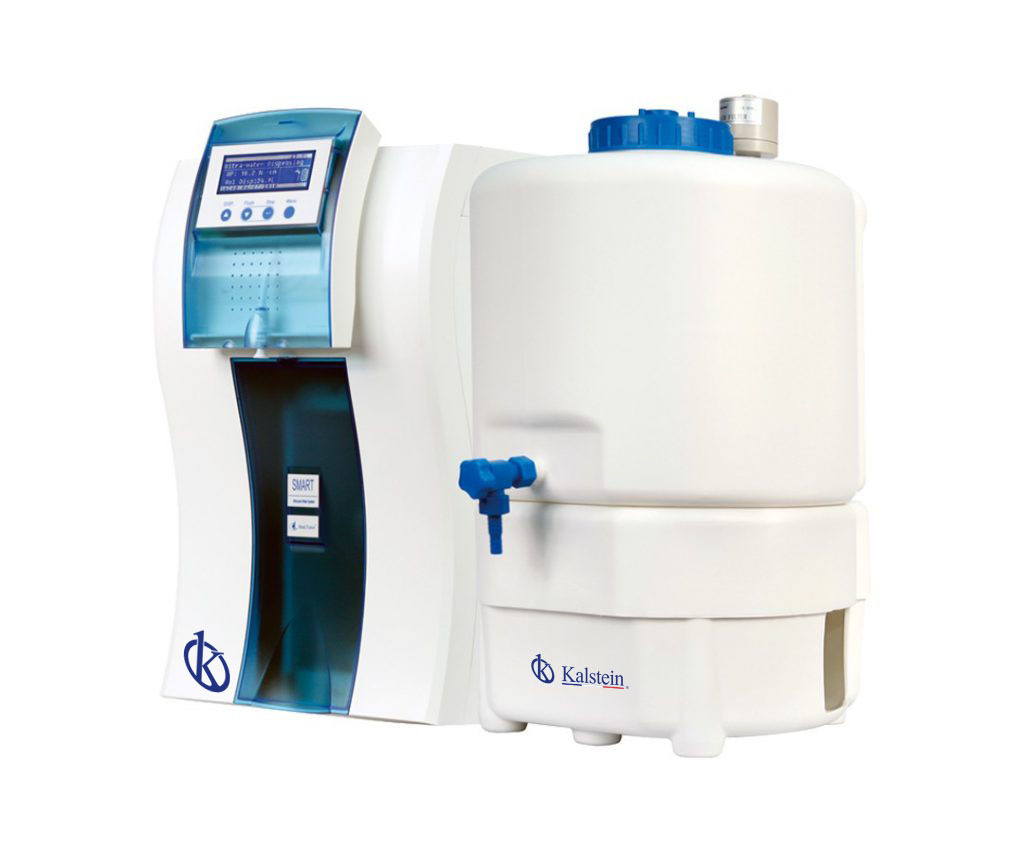It is a laboratory water ultra-purification equipment. This device is structured by cutting-edge technologies for water purification, in accordance with internationally required specifications. This equipment is intended to obtain water of the highest quality for use in laboratories, food industries, pharmaceuticals and in any other place where it is necessary to use pure treated water.
What is water purification?
Water purification refers to the process by which residues (or impurities) of this inorganic chemical compound made up of two hydrogen atoms and one oxygen atoms are removed.
The level of purity of water is classified into different types. Type III water is normally obtained after a first purification process. After this first stage, the water can be re-purified to a type II level of purity. Finally, for certain uses it is necessary to achieve a type I purity level, for which a more elaborate final purification process must be applied. Here are the main characteristics of these waters:
Type I water: Known as ultrapure water or the highest quality water. Free of ions, organic compounds, and is the most appropriate for techniques with analytical sensitivity. Its maximum conductivity is 0.1 µS / cm at 25 ºC and its maximum silica content is 0.01 mg / l.
Type II water: Contains very low levels of organic and inorganic contaminants. It is obtained by reverse osmosis or deionization and used in buffer solutions, to dilute reagents, in histology, general chemistry, drug production. Its maximum conductivity is 1 µS / cm at 25 ºC and its maximum silica content is 0.02 mg / l.
Type III water: It is produced by distillation or by reverse osmosis. It is widely used in laboratories.
What is ultrapure water?
Ultra pure water is understood as type I purified water. This is characterized by being composed exclusively of water molecules, with hydrogen and hydroxyl ions. The impurity that can be detected in ultra pure water depends on the techniques used, in addition to the environment in which it is carried out. Currently, the accepted standard for maximum levels of non-gaseous impurities in water is: 1.0 µg / L for other elements and ions, 1.5 µg / L (parts per billion) for organic compounds. This translates into ultrapure laboratory water reaching up to 99.999999% purity.
It has a resistivity of 18.2 MΩ.cm, TOC of <10 ppb, and bacterial count of <10 CFU / ml. To be classified as ultrapure, the water must not contain detectable endotoxins. This level of purity makes it a perfect reagent for laboratory work.
What is ultrapure water used for?
Ultrapure water is used primarily in the semiconductor and pharmaceutical industries, although it is an ideal solution for any work in the laboratory. Its level of purification makes it versatile for very sensitive applications. Applications that use this type of water include:
- High performance liquid chromatography (HPLC).
- Liquid chromatography-mass spectrometry.
- Gas chromatography-mass spectrometry.
- Atomic absorption spectroscopy with graphite furnace.
- Polymerase chain reaction (PCR).
- Immunochemistry.
- Mammalian cell culture.
- Clinical analyzers.
- Trace analysis.
At Kalstein we offer you innovative water purification systems through which you can obtain ultrapure water. That is why we invite you to take a look at the Products menu.HERE

